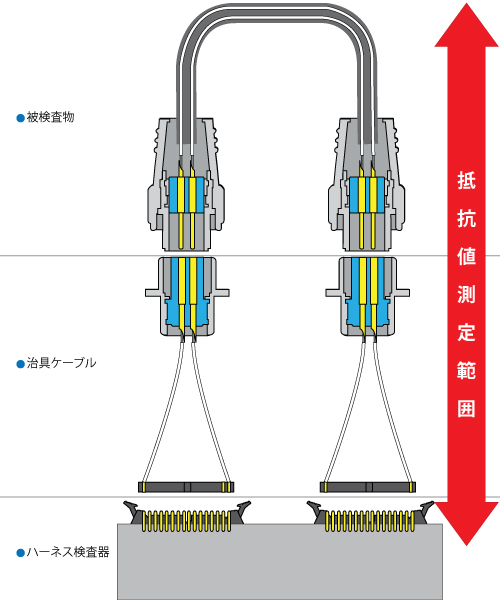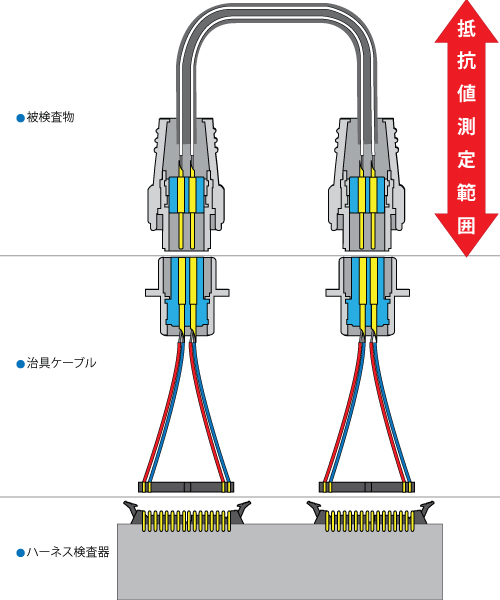What is conduction resistance testing?
The conduction resistance test is to measure the conductor resistance between terminals of a wire harness and to judge whether it is within the set resistance threshold. It follows Ohm's law R = V / I.
Resistance Measurement Method
NAC CORPORATION wire harness testers are available in two methods: 2-wire resistance testing and 4-wire low-resistance testing.
2-wire resistance testing method
This is a simple and common resistance measurement method. It measures the resistance of test targets and jigs connected between the testing terminals of a harness tester.

It includes the contact resistance of connectors and some internal resistance of the tester.
4-wire low-resistance testing method
This connection is known as the Kelvin connection or the 4-terminal method.Four testing terminals are applied to one cable (one circuit) to measure its resistance.

It does not include the resistance of jig cables, the contact resistance of connectors, or the internal resistance of testers. Therefore, the resistance of a pure test target can be measured with high accuracy.
Test Current during Conduction Resistance Testing
The test current is direct current. Resistance measurement is performed at the optimum current for the resistance of the test target.
- Product Search
- Inspection Spec
- Category
- Options
- Discontinued Product
- All Products



